Transforming Homes into the Future: A Comprehensive Guide to Smart Home Automation in 2024
Published at 1/31/2024
Alexander Hack
18 mins read
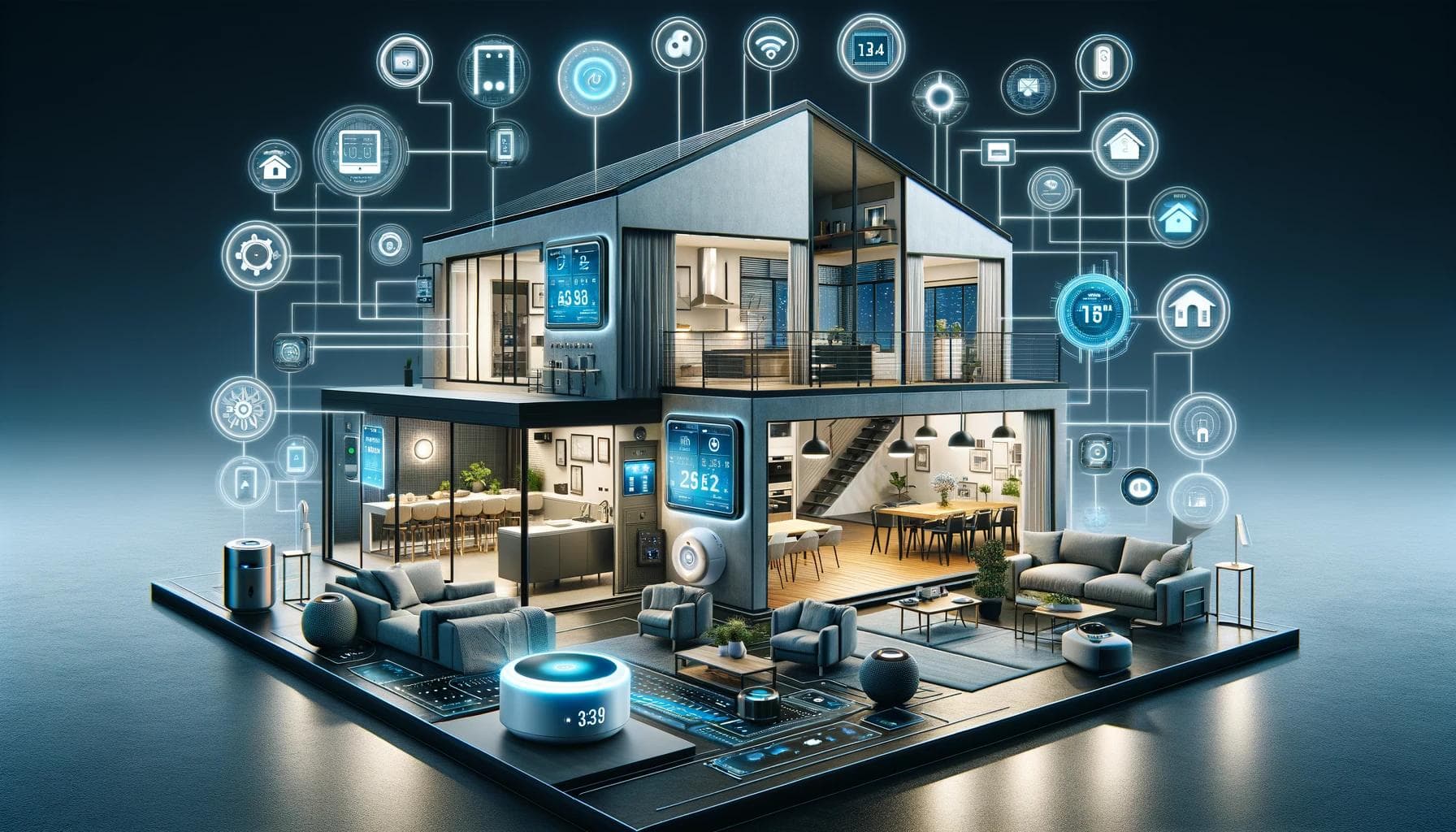
Whether you're a tech enthusiast or just looking for ways to simplify your life, you've likely been intrigued by smart home automation. As an experienced smart home enthusiast and tech industry professional, I've dedicated significant time to researching smart home automation companies, testing various automated home systems, and using smart home installation services. This journey has given me a deep understanding of automation devices, smart home installation, and the role of the Internet of Things (IoT) in home automation. This comprehensive guide is designed to share the insights and knowledge I've gained along the way.
Table of Contents
Understanding Smart Home Technology
What is Smart Home Technology?
Smart home technology, also known as smart house technology, includes a wide range of devices, appliances, and systems that connect to a unified network for autonomous and remote control. The concept of a smart home began to evolve in the later years of the 20th century, but it has only become popular recently due to advancements in the Internet of Things (IoT).
To answer the increasingly common question, "What is smart home technology?", we find that its growth is primarily driven by IoT. This technology enables devices to connect and communicate not only with each other but also with the user. By allowing remote and autonomous control of homes, this innovative technology has transformed our daily experiences, offering a seamless, integrated experience. It provides unparalleled comfort, control, and efficiency. However, the vast selection of smart home devices can be overwhelming when deciding which ones to incorporate into your home.
Your next step should be to understand the function of each smart home device and determine how it can support your home automation goals. You should also consider the ease of setup and the quality of customer support provided by the manufacturer. Lastly, ensure the smart home devices you select are compatible with your current home setup and other smart devices. In summary, smart home technology gives you the power to control homes effectively and efficiently.
How Does Smart Home Technology Work?
Smart house technology, is primarily based on the Internet of Things (IoT) concept. IoT allows everyday devices in both smart and automated homes to connect to the internet and interact with each other. In the realm of smart home setups, these interconnected devices communicate via technologies like Wi-Fi, Zigbee, or Z-wave. This connection between IoT and smart homes enables remote control over these devices, either through a smartphone app or a hub.
Once these devices, typical of smart house features, are networked, they can be programmed to perform specific tasks according to your preferences. For example, you could program your smart lights to dim at a certain time every evening. Alternatively, your smart thermostat could be set to adjust the temperature in anticipation of your return, demonstrating the benefits of IoT in home automation.
This automation, facilitated by smart home technology and simplified by IoT, not only increases convenience but also promotes more efficient energy use. Therefore, advancements in IoT and smart home technology, whether in a smart house or an automated home, represent a significant step forward in the field of smart house features.
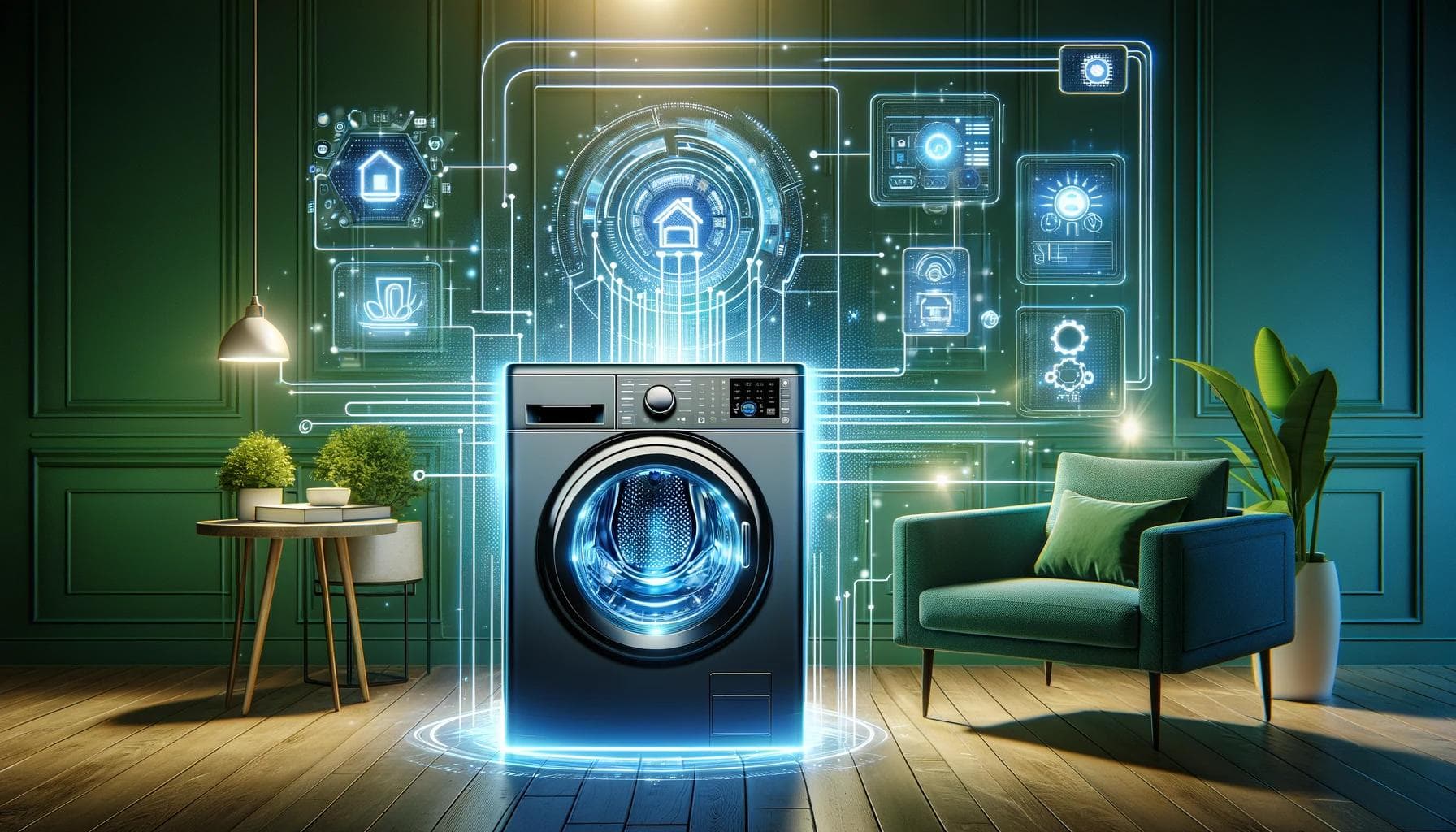
Smart Laundry Revolution: Elevate Your Home with Cutting-Edge Washing Tech
Smart Laundry Revolution: Elevate Your Home with Cutting-Edge Washing Tech
Step into the future of home care with our in-depth exploration of smart laundry systems. Find out how these high-tech washing machines are making laundry day a breeze with their advanced features, energy efficiency, and eco-friendly innovations. Perfect for those looking to upgrade their home appliances and embrace a smarter, more sustainable lifestyle.
Evaluating the Worth and Safety of Smart Home Technology
Is Investing in Smart Home Technology a Wise Decision?
When I first contemplated integrating smart home technology into my house, I faced the same question many of you might be asking: Is it really worth it? The answer, I've found, is not a simple yes or no. It's more about what you value and expect from your home.
- Increased Convenience: Imagine controlling your home's temperature, lighting, and security systems with just your voice or a smartphone app. That's the everyday ease we're talking about!
- Enhanced Security: Smart security systems can offer real-time alerts and remote monitoring, adding an extra layer of safety.
- Improved Energy Efficiency: Automated thermostats and smart lighting can significantly reduce energy bills.
- Potential Long-Term Savings: Though the initial setup can be pricey, the long-term savings from energy efficiency and preventive home maintenance are tangible.
However, it's not all smooth sailing. Privacy concerns and the initial investment are significant considerations. Setting up a comprehensive system can be costly, and the thought of your home data potentially being vulnerable might be unsettling.
Is Smart Home Technology Safe?
In my journey to a smart home, safety was a top priority. The thought of my home being 'hackable' was initially a deterrent. Yet, as I delved deeper, I realized that with the right measures, the risks can be effectively managed.
- Regular Software Updates: Keep your devices updated to protect against the latest security vulnerabilities.
- Strong Passwords: Use unique passwords for each device and change them regularly.
- Permission Management: Be mindful of who has access to your smart home controls.
- Secure Network: Connect your devices to a secure Wi-Fi network. Avoid public or unsecured networks for your smart home devices.
- Use of VPN: For an added layer of security, consider using a VPN.
- Choose Reputable Brands: Opt for devices from manufacturers known for prioritizing security.
Embracing smart home technology means embracing its challenges too. But don't let that deter you. With the right precautions, the journey to a smart, automated home can be both safe and rewarding. Remember, staying vigilant and proactive is key to enjoying the myriad benefits of smart home technology while safeguarding your digital privacy and security.
Planning and Installation
What is Smart Home Installation?
My adventure into the world of smart homes began with the question: "What exactly does installing a smart home entail?" Whether you're a DIY enthusiast or someone who prefers professional assistance, understanding the installation process is crucial.
- DIY Approach: Ideal for those who are tech-savvy and enjoy hands-on projects. This route can be more cost-effective and offers a deep understanding of your system.
- Professional Installation: Smart home automation companies offer expertise and peace of mind, ensuring everything is integrated and functioning correctly.
I chose to go the DIY route, which was a journey filled with learning opportunities. However, I understand the appeal of the worry-free experience that comes with professional installation.
How to Install a Smart Home System
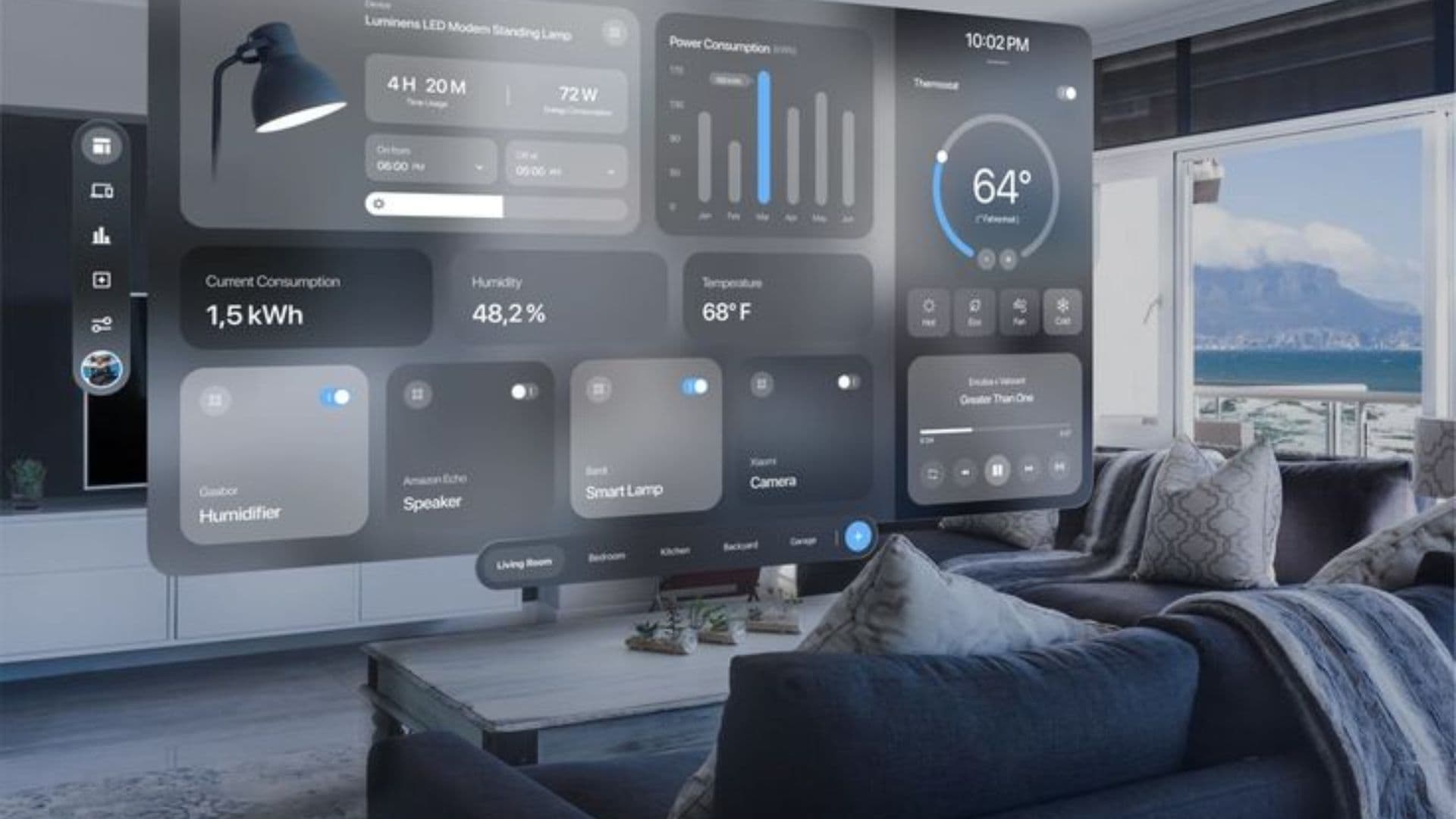
Embarking on my smart home installation journey, I discovered that it's much more than just plugging in devices. It's about creating a cohesive, responsive environment that caters to your lifestyle. Let me walk you through the steps, peppered with my own experiences and tips.
Detailed Steps with Personal Insights:
- Choosing Your Central Hub or Smart Speaker:
- My Choice: I opted for a hub compatible with a wide range of devices, considering future expansions.
- Tip: Research compatibility with existing and potential future devices. Think long-term.
- Installing Individual Smart Devices:
- Lighting: Starting with smart bulbs was an easy first step. The immediate impact they had on setting the mood in my home was a delight.
- Thermostats: Installing a smart thermostat was a game-changer for energy savings. It took some tweaking to get the settings just right.
- Security Cameras and Systems: This required more careful planning for placement and integration with the hub and mobile alerts.
- Smart Locks and Doorbells: Adding these brought a new level of convenience and security. Remember to check compatibility with your door types and frames.
- Connecting Devices to Your Network and Each Other:
- Wi-Fi Strength: I learned the hard way that a robust Wi-Fi network is crucial. Consider a mesh network if you have a larger home.
- Device Integration: Getting devices to communicate with each other was both challenging and rewarding. Automation routines, like having lights turn on when the security camera detects motion, were satisfying to set up.
- App Management: Centralizing control through a single app, where possible, simplifies daily use.
- Setting Up Automation Routines:
- Morning and Night Routines: Automating the dimming of lights in the evening and gradual brightening in the morning transformed my daily experience.
- Security Checks: Setting up routines for security checks when away from home added peace of mind.
- Energy Saving Routines: Automating heating and cooling based on time of day and occupancy helped in reducing energy bills.
- Testing and Tweaking:
- Trial and Error: Not everything worked perfectly the first time. Be prepared to tweak settings and positions, especially with motion sensors and cameras.
- User Experience: I involved my family in the testing phase, ensuring the system was user-friendly for everyone.
- Ongoing Maintenance and Updates:
- Regular Updates: Keeping software updated is crucial for security and new features.
- Periodic Check-ups: Regularly check device batteries and Wi-Fi connectivity.
The journey to a fully smart home is ongoing. It's not just about the initial setup but about evolving your home with your changing needs. Each step brings its own set of challenges and triumphs, and the result is a living space that's not only smart but also a true reflection of your lifestyle and preferences. Remember, the goal is to create a home that works for you, not the other way around.

Occupancy Sensors in Smart Thermostats: The Future of Energy Efficiency and Comfort
Occupancy Sensors in Smart Thermostats: The Future of Energy Efficiency and Comfort
Discover how occupancy sensors in smart thermostats are revolutionizing home automation for enhanced energy efficiency and comfort. Explore the latest advancements in sensor technology, the impact on energy consumption, and the benefits for both residential and commercial settings. Learn about the integration with IoT, privacy considerations, and future trends in this comprehensive guide to smart climate control. Perfect for homeowners and tech enthusiasts looking to optimize their living spaces for efficiency and comfort.
Smart Home Installation Services and Companies
When I reached the point of considering professional installation services, I realized the value they could bring. While I enjoyed the DIY aspect, professional services can offer expertise and efficiency that might be crucial for some homeowners.
Exploring Professional Services:
- Expertise and Experience: Professional installers have a depth of knowledge that can be invaluable, especially for complex systems. Their experience means they can anticipate and solve problems quickly.
- Time-Saving and Convenience: One of the biggest draws for me was the time efficiency. These services can get your system up and running quickly, a great advantage if you're short on time or patience.
- Customized Solutions: Many companies offer personalized consultations to tailor the system to your specific needs and preferences. This bespoke approach can make a significant difference in how well your smart home functions.
- After-Service Support: Post-installation support is a big plus. Having someone to call for troubleshooting or updates is reassuring, especially if you're not tech-savvy.
A friend of mine, who went for professional installation, shared how the service handled the entire setup in a day, something that took me several weekends. The efficiency and ease of their process were eye-opening.
DIY vs Professional Installation
Choosing between DIY and professional installation depends on various factors like your budget, time, and comfort with technology. While I cherished the learning and satisfaction from the DIY route, the efficiency and expertise of professional services are undeniably appealing for many. Remember, the goal is to enhance your lifestyle with smart technology, so choose the path that aligns best with your circumstances and comfort level.
Costs and Budgeting
How Much Does a Smart Home Installation Cost?
When I started pricing out my smart home, I quickly realized costs can vary widely. It's not just about buying gadgets; it's about creating a cohesive ecosystem.
Key Cost Factors:
- Choice of Devices: The range is vast – from basic smart bulbs to high-end security systems. I found that starting with essential items and gradually expanding worked best for my budget.
- DIY vs. Professional Installation: DIY can save on labor costs but may require additional tools or equipment. Professional services, while more expensive, come with expertise and efficiency.
- Complexity of the System: The more complex your setup (like integrated audio systems or complete home automation), the higher the cost. Simpler systems can be more budget-friendly.
I learned that buying devices during sales or opting for bundles can offer significant savings. Also, starting with a smaller system and expanding over time helped spread out the costs.
Expanding on the cost aspect of smart home installation, let's delve into some specific categories and examples that reflect the current market trends as of 2024.
- Home Security: Security systems form a significant part of most smart homes. The costs can range from $700 to $5,000 on average. This includes basic options like video doorbells ($100 - $200) to more advanced whole-home security packages with cameras, motion sensors, and smart locks starting at around $1,500.
- Smart Lighting: For automating your home's lighting, the average cost ranges between $1,000 to $3,000. This includes individual smart bulbs ($15 - $30 each), switches ($20 - $80 per unit), and smart hubs ($60 - $300).
- Heating and Cooling: The installation of smart thermostats typically ranges from $120 to $300 each. If you're considering upgrading your full HVAC system for smart control, the average cost is about $2,000 to $4,000.
- Home Entertainment: The costs here can vary widely, starting as low as $30 for basic automation using smart power outlets. For a more comprehensive home entertainment integration, costs can exceed $2,000.
- Lawn and Garden: Basic smart outdoor tech, like irrigation controllers, start at around $100, with more advanced options like robot lawnmowers costing between $800 to $2,500.
- Smart Curtains: Prices for smart curtains can range from $60 to $1,000 per window, depending on the brand and features.
- Installation Options: If you choose the DIY route, expect to spend between $250 to $3,000 for the necessary equipment. Professional installation, on the other hand, can cost from $2,000 to over $10,000, depending on the complexity and size of your home.
- Ongoing Costs: Don't forget to budget for regular maintenance like software updates, battery replacements for wireless sensors, and general repairs over time.
- Other Factors Affecting Cost: The overall cost can also depend on factors like the size of your home, number of rooms, types of devices, and whether you opt for DIY or professional installation. For instance, a professional might charge around $85 per hour for installation. Starter kits for home automation can range from $40 to $500, with additional costs for compatible devices, controllers, and cloud automation fees.
In summary, while the initial investment in a smart home system can vary greatly based on your choices and needs, careful planning and consideration of the ongoing costs can help manage your budget effectively. It's also worth noting that smart homes can offer long-term savings in energy bills and potentially increase your home’s value.
Converting Your Home into a Smart Home: Financial Aspects
Transforming a traditional home into a smart home doesn't have to be an all-at-once endeavor. I approached it as a journey, adding layers of smartness over time. This staggered approach is easier on the wallet and allows for learning as you go.
Strategies for Cost Management:
- Prioritize Needs over Wants: Focus on devices that offer the most value for your lifestyle. For me, energy-saving devices like smart thermostats and LED lights were top on the list.
- Research and Compare: Spending time comparing prices and features pays off. Look for reviews and user experiences to gauge the real-world performance of devices.
- Avoid Redundancy: Ensure new devices integrate well with existing ones. Buying overlapping technologies can inflate costs unnecessarily.
Estimating Smart Home Costs
Embarking on the smart home journey is an investment in comfort, security, and efficiency. It doesn't have to be a financial strain if approached thoughtfully. By carefully planning and prioritizing, you can create a smart home that aligns with both your lifestyle and budget. Remember, the best smart home is the one that brings value to your everyday life without causing financial stress.
Choosing the Right Technology and Devices
Which Smart Home Technology and Devices to Use?
When it comes to selecting smart home technology and devices, the market is filled with an array of options that cater to different needs and preferences. The key to making the right choice is to focus on your specific requirements and ensure that the devices are compatible with each other.
Before diving into the specific examples of smart home technology, it's important to understand the general components that are commonly found in a smart home setup. These components work together to create a seamless, automated living environment. Here's a bullet list outlining the general things needed in a smart home:
- Central Hub or Smart Speaker: Acts as the control center for smart home devices, facilitating communication and integration.
- Smart Lighting: Includes smart bulbs and switches that allow remote and automated control of lighting in the home.
- Smart Thermostats: For efficient heating and cooling, enabling remote temperature control and scheduling.
- Home Security Devices: Such as smart locks, security cameras, and alarm systems for enhanced home security.
- Smart Entertainment Systems: Including smart TVs, speakers, and streaming devices for a connected entertainment experience.
- Mesh Network System: Ensures robust Wi-Fi coverage throughout the home, crucial for the smooth operation of smart devices.
- Voice Assistants: Integrated into hubs or speakers, allowing voice control of various smart home functions.
- Smart Appliances: Like refrigerators, ovens, or washing machines, offering advanced features and connectivity.
- Home Automation Software/Apps: For managing and controlling smart home devices from a smartphone or tablet.
- Smart Sensors: Such as motion detectors, door/window sensors, and environmental sensors for automation and security.
- Smart Plugs/Outlets: Convert regular appliances into smart ones, offering remote control and scheduling.
- Network Security: Ensuring a secure and reliable connection for all smart devices to protect against cyber threats.
With these general components in mind, you can better understand the specific examples of smart home technology following now. Each device or system plays a role in enhancing the convenience, efficiency, and security of your home.
Examples of Popular Smart Home Devices in 2024:
- Smart Speakers:
- Amazon Echo (4th Gen): Known for its space-age spherical design and advanced features, including an onboard hub for easy setup of Zigbee-enabled devices. Its adaptive speaker adjusts to ambient noises for optimal sound quality.
- Amazon Echo Studio: Ideal for those preferring Alexa, offering new spatial audio processing, enhanced frequency range, and integration with Fire TV devices for a home-theater setup.
- Mesh Networks:
- Google Nest WiFi Router: Offers reliable Wi-Fi with intuitive setup, and the nodes double as smart speakers with built-in Google Assistant.
- Asus ZenWiFi: Provides impressive Wi-Fi coverage for large homes and is easy to set up, but requires a separate hub for smart home integration.
- Smart Lighting:
- Philips Hue Smart Bulb Starter Kit: Includes smart bulbs and the Hue Bridge, offering an enormous range of light settings and color variations.
- Kasa Smart Light Bulbs: An affordable option with easy installation and a user-friendly app, allowing for color and temperature adjustments.
- Smart Thermostats:
- Ecobee Smart Thermostat with Voice Control: Features room sensors for temperature monitoring and integrates well with other smart home products.
- Nest Thermostat: Learns your habits to automatically adjust temperature for comfort and energy savings.
- Smart Security Cameras:
- Arlo Pro 3 Spotlight Camera: Offers high-quality video, night vision, and integrates with smart home systems like Alexa and Google Assistant.
- Miscellaneous:
- Apple HomePod: A Siri-enabled speaker with spatial awareness for optimal sound quality.
- Amazon Smart Plug: Transforms non-Internet-connected devices into smart ones, integrating with Alexa.
Real Examples of Smart Home Technology
- Amazon Echo Show 5: Ideal for managing smart home devices, making video calls, and streaming content.
- Nest Protect: Offers carbon monoxide and smoke monitoring with remote capabilities.
- Vivint Home Security System: Provides a comprehensive security solution with various devices like outdoor cameras and smart locks.
These examples demonstrate the diversity in smart home technology, offering solutions from basic lighting controls to comprehensive security systems. The right choice for you will depend on your home's requirements, your lifestyle, and your preference for certain ecosystems like Alexa, Google Assistant, or Apple HomeKit.
When selecting devices, it's essential to consider how they will integrate into your existing setup and whether they will meet your long-term needs. For instance, if you're starting with smart lighting, Philips Hue offers a robust and versatile option, while Kasa presents a more budget-friendly alternative. For those looking into comprehensive security solutions, the Vivint Home Security System is an excellent choice, though it requires a more significant investment.
In conclusion, the best smart home technology for you will seamlessly blend with your lifestyle, offering convenience, efficiency, and a touch of modernity to your living space.

2024's Best Laptops Revealed: Comprehensive Guide for the Perfect Choice
2024's Best Laptops Revealed: Comprehensive Guide for the Perfect Choice
Discover 2024's top-rated laptops across categories like high-performance, budget-friendly, gaming, and more. Our expert guide offers detailed insights into the latest trends, technical specifications, and essential factors to consider, ensuring you make an informed decision for your next laptop purchase.
Real-World Application and User Perspective
Who Uses Smart Home Technology and Why?
Smart home technology has expanded its reach, catering to a diverse range of users, each with unique motivations for integrating these systems into their lives. Here’s a breakdown of who uses smart home technology and why, along with mention of some trending products:
- Tech Enthusiasts and Early Adopters:
- Why: They are attracted to the latest technology and enjoy being the first to experiment with new gadgets.
- Trending Products: The latest models of smart speakers like the Amazon Echo Studio or cutting-edge security devices like the Arlo Pro 3 Spotlight Camera.
- Families:
- Why: For convenience and time-saving benefits, particularly in managing household tasks and enhancing entertainment options.
- Trending Products: Google Nest Hub for organizing family schedules, Philips Hue Smart Bulbs for easy lighting control, and smart appliances like Wi-Fi-enabled refrigerators.
- Home Security Advocates:
- Why: Increased security is a major draw, with smart technology providing real-time monitoring and alerts.
- Trending Products: Smart locks like the August Wi-Fi Smart Lock, Ring Video Doorbell for front door surveillance, and comprehensive systems like the Vivint Home Security System.
- Eco-Conscious Individuals:
- Why: Interested in reducing their carbon footprint and energy costs through efficient home management.
- Trending Products: Smart thermostats like the Ecobee or Nest Learning Thermostat, which optimize heating and cooling for energy efficiency.
- Elderly or Disabled Persons:
- Why: Smart home technology can offer enhanced safety and independence, with voice-activated controls and remote monitoring.
- Trending Products: Voice-controlled devices like Amazon Echo or Google Nest Mini, smart lighting systems for easy light control, and smart sensors for safety monitoring.
- Busy Professionals:
- Why: To streamline daily tasks and home management, maximizing time and efficiency.
- Trending Products: Smart coffee makers for a scheduled morning brew, robotic vacuum cleaners like the Roomba, and smart plugs for remote appliance control.
- Property Managers and Landlords:
- Why: To offer modern amenities to tenants, potentially increasing property value and appeal.
- Trending Products: Smart thermostats and lighting systems for communal areas, keyless entry systems for enhanced security.
- Health and Fitness Enthusiasts:
- Why: Integration of health monitoring and fitness routines into their daily lives.
- Trending Products: Smart scales like the Fitbit Aria, smart mirrors for fitness coaching, and wearables that integrate with home systems.
Each user group is drawn to smart home technology for reasons that align with their lifestyle, needs, and interests. The diversity in smart home products available today makes it possible to tailor a smart home environment that is as unique as the individuals and families who use them.
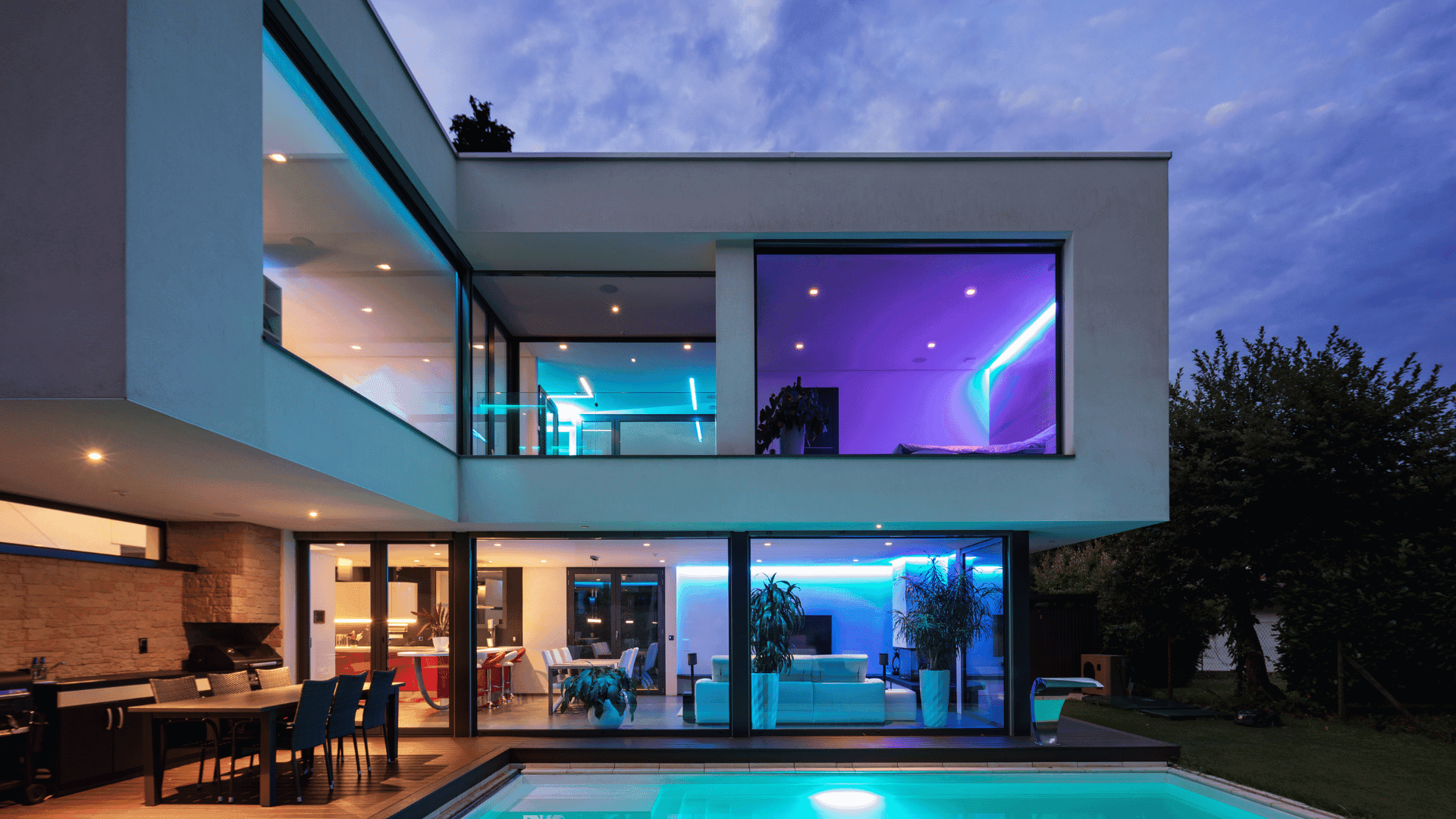
Smart LED Strips Unveiled: Top Picks on Amazon & Expert Solutions for Seamless Integration
Smart LED Strips Unveiled: Top Picks on Amazon & Expert Solutions for Seamless Integration
Enhance your smart home with the best smart LED strips of 2024! This blog covers everything from basic setup to advanced integration, troubleshooting, and more. Learn how to connect Philips Hue to Alexa, Google Wifi, and Home Assistant, and discover the best Philips Hue apps and multi-user capabilities. Create a wake-up light routine, synchronize Philips Hue with Netflix, and optimize scenes with Nanoleaf Shapes Hexagon Smarter Kit. Find the perfect smart LED strip for your needs and budget, and take your smart home experience to the next level!
Why is Smart Home Technology Important?
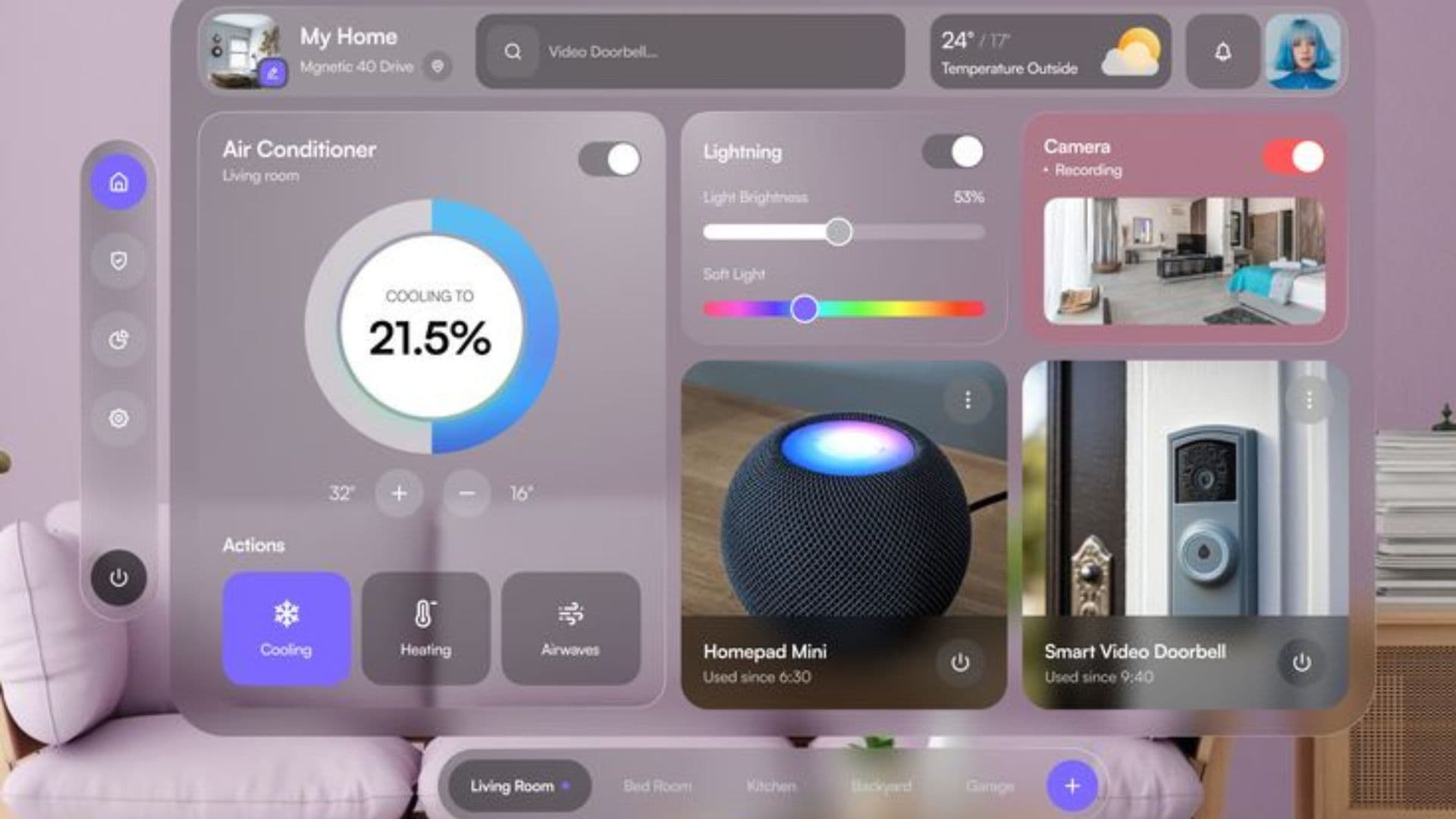
Smart home technology, or more specifically a smart home automation project, is more than just a modern convenience. It signifies a smart house's major shift in the way we interact with both our living spaces and the iot home. It has the potential to transform our daily routines, increase a smart home's energy efficiency, and enhance our smart house features including home security.
In addition to the practical benefits, smart home automation using iot also offers a level of comfort and customization that was previously unattainable. With the ability to control lighting, temperature, and even music with a simple voice command in a smart home automation project, homeowners can create an iot home environment that perfectly suits their needs and preferences. Furthermore, smart house features within smart home technology can provide peace of mind, with features like remote monitoring and automatic alerts for potential security threats.
Importance of Smart Home Technology
Smart home technology, especially in the context of home automation projects, represents a significant shift in how we interact with our living spaces and the broader Internet of Things (IoT). Below is a table highlighting the key areas where smart home technology is making an impact:
The future of smart home technology incorporating iot home automation is promising, with advancements in artificial intelligence and machine learning paving the way for more intuitive and personalized experiences in our iot home. As technology continues to evolve, we can expect to see even more innovative solutions that will further revolutionize our smart houses. Whether you're a tech enthusiast or simply seeking to improve your smart home's efficiency and security through a smart home automation using iot, there's no denying the transformative potential of smart home technology.
Conclusion
Embarking on the journey to create a smart home can be both an exciting and daunting endeavor. While it's true that setting up a smart home requires an investment of both time and money, the myriad of benefits it brings can be immensely rewarding. Smart home technology stands out not just for its ability to enhance your home's energy efficiency, but also for the remarkable convenience and advanced security features it offers.
- Transforming Daily Life: The convenience of managing your home remotely or through voice commands can simplify daily tasks, providing you with more time to enjoy the things you love.
- Energy Efficiency: Smart devices like thermostats and lighting systems can significantly reduce your energy consumption, leading to lower utility bills and a smaller carbon footprint.
- Enhanced Security: With smart locks, cameras, and alarm systems, the security of your home is bolstered, giving you peace of mind whether you're at home or away.
- Customized Living: Smart home technology allows you to tailor your living environment to your specific needs and preferences, making your home a more comfortable and personalized space.
Additional Resources
For those keen to delve deeper into the world of smart home technology, there's a treasure trove of resources available:
- Tutorials and DIY Guides: YouTube channels like Smart Home Solver and The Hook Up offer practical advice and step-by-step tutorials for both beginners and advanced users.
- Blogs and Articles: Blogs like Home Automation Blog and Automated Home provide the latest news, trends, and insights into the smart home industry.
- Online Forums and Communities: Platforms like Reddit's r/smarthome or SmartThings Community provide a space for enthusiasts to discuss, share tips, and offer support.
Remember, building a smart home is a journey that should align with your personal needs and lifestyle. Starting with a few key devices and gradually expanding allows you to learn and adapt your system to best suit your daily life. Research, patience, and a bit of experimentation will go a long way in creating a smart home system that enhances your comfort, security, and efficiency.
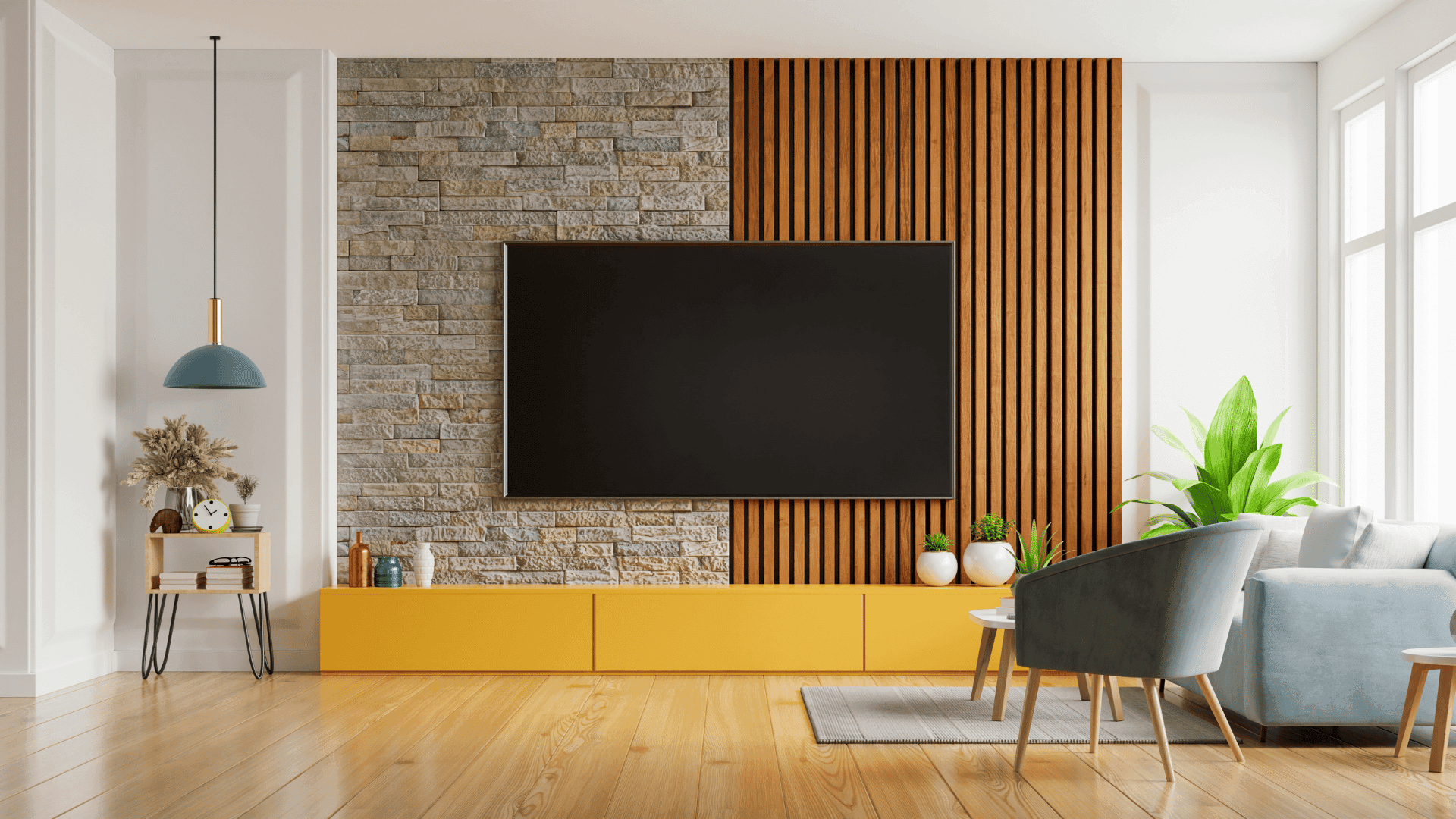
Unveiling the Future of TV: Mini-LED Technology's Breakthrough in Smart TVs
Unveiling the Future of TV: Mini-LED Technology's Breakthrough in Smart TVs
Discover how Mini-LED technology is transforming the Smart TV landscape. Dive into our comprehensive guide exploring Mini-LED's advantages over traditional LED and OLED TVs. Experience unparalleled picture quality, superior contrast, and longevity with the latest in display technology. Whether you're a cinephile, a gamer, or simply seeking the ultimate home theater experience, our insights on Mini-LED Smart TVs will guide you to make an informed choice. Join us in exploring the vibrant and dynamic world of Mini-LED displays.










